I am an
ASTROPHYSICIST
At MITNergis Mavalvala, PhD
This scientist was part of our original collection.*A few features may be different.
NERGIS
MAVALVALA
She/Her
“We think that when we make a discovery we’ve answered a question, but almost always what we have really done is pose a new question.”
Solving a really hard puzzle often comes down to three things: persistence, creativity, and the right tools. So, the more tools you have in your toolbox, the more likely you are to find one that fits.
Growing up in Karachi, Pakistan, Dr. Mavalvala’s life seemed to have a straightforward trajectory. She was always interested in math and science, and the work came easily to her. So easily, in fact, that by the time she was in high school, she’d been hired as a substitute teacher to teach 8th grade math.
But, like any clever problem solver knows, sometimes the most challenging puzzles require you to think outside of the box.
So when it came time to choose a school, Dr. Mavalvala decided to try something a little bit different. She moved to the US, where she enrolled in a liberal arts college so that she could cultivate a creative mind to serve her curiosities. As a queer woman of color, she also began to develop her interests as an advocate for breaking stereotypes. And as a lifelong athlete, she developed a deep respect for the role of failure and persistence on the path to success.
Across her experiences, she found that no matter how good you are or how much you care, progress is rarely linear or easy. That knowledge came in handy when she started graduate school at MIT.
As a student in astrophysics, she failed her PhD candidacy exam. And then she failed again. Rather than give up on her work or herself, she kept pushing to improve, to grow, and to learn from her mistakes. Until finally, she passed.
With her toolbox now full, she set her sights on solving one of the most elusive puzzles in all of the cosmos: black holes. She began looking for gravitational waves, a phenomenon that had never been directly observed before. To detect them, she challenged herself to look to outside fields, like optics and quantum mechanics, for insights that might inform her own search for answers — often stumbling upon new questions instead. Finally, after decades of creative problem solving and refusing to give up, Dr. Mavalvala and her colleagues succeeded, gravitational waves were detected for the first time, and the work she contributed to was awarded the 2017 Nobel Prize in Physics.
It wasn’t just her scientific training that made Dr. Mavalvala the renowned scientist that she is today. Through sports, she learned the power of persistence and overcoming defeat. Through the arts, she learned the importance of an open mind and a creative process. And through the problems she solved, she learned that the solution to one puzzle is often just the first clue for the next one.
Notable Accomplishments:
PhD in Physics, MIT
2010 MacArthur Fellowship
Elected to National Academy of Sciences
The
basics:
Expertise: Astrophysics; Experimental Physics; Quantum Mechanics
Title: Professor & Associate Head of the Department of Physics
Institution: MIT
I am a pioneering mom who loves puzzles, sports, the arts, and studying black holes.
PUZZLES
•
BIKING + SQUASH
•
POLITICAL ACTIVISM
•
STEAM EDUCATION
•
READING
•
PUZZLES • BIKING + SQUASH • POLITICAL ACTIVISM • STEAM EDUCATION • READING •
things I love:


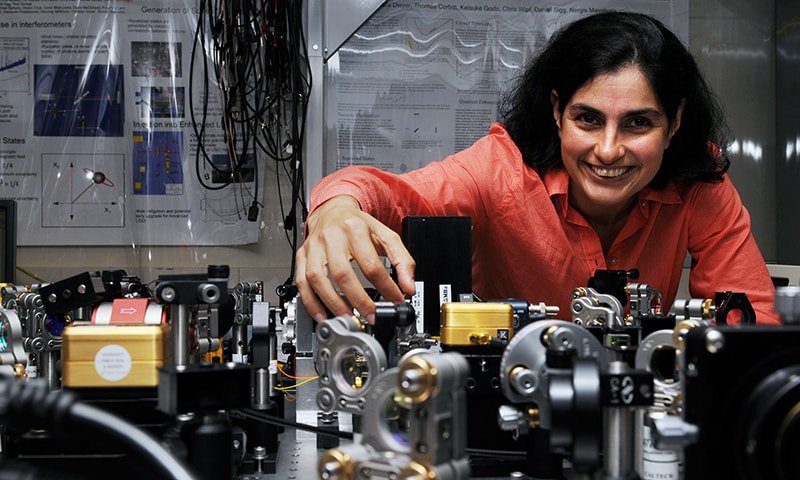
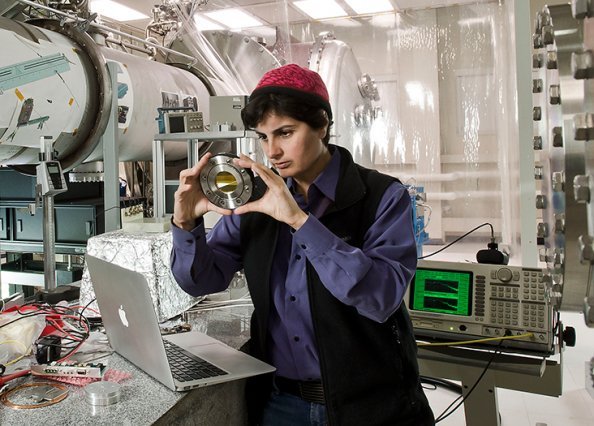
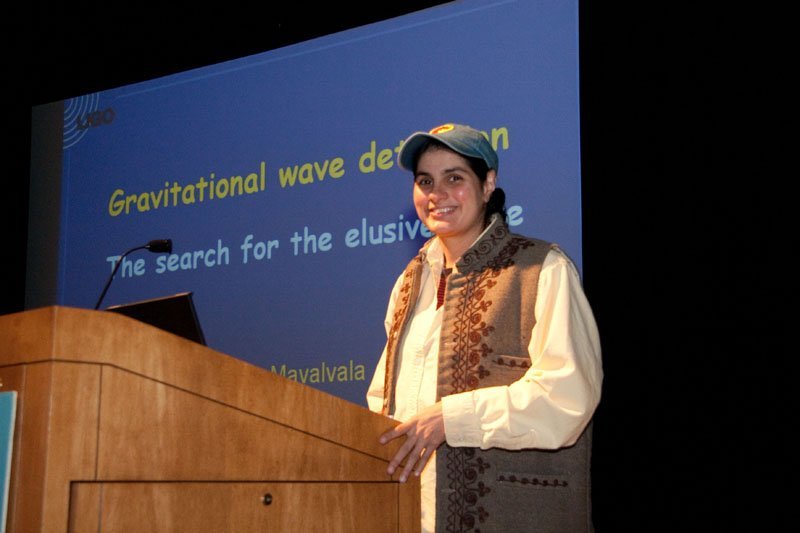
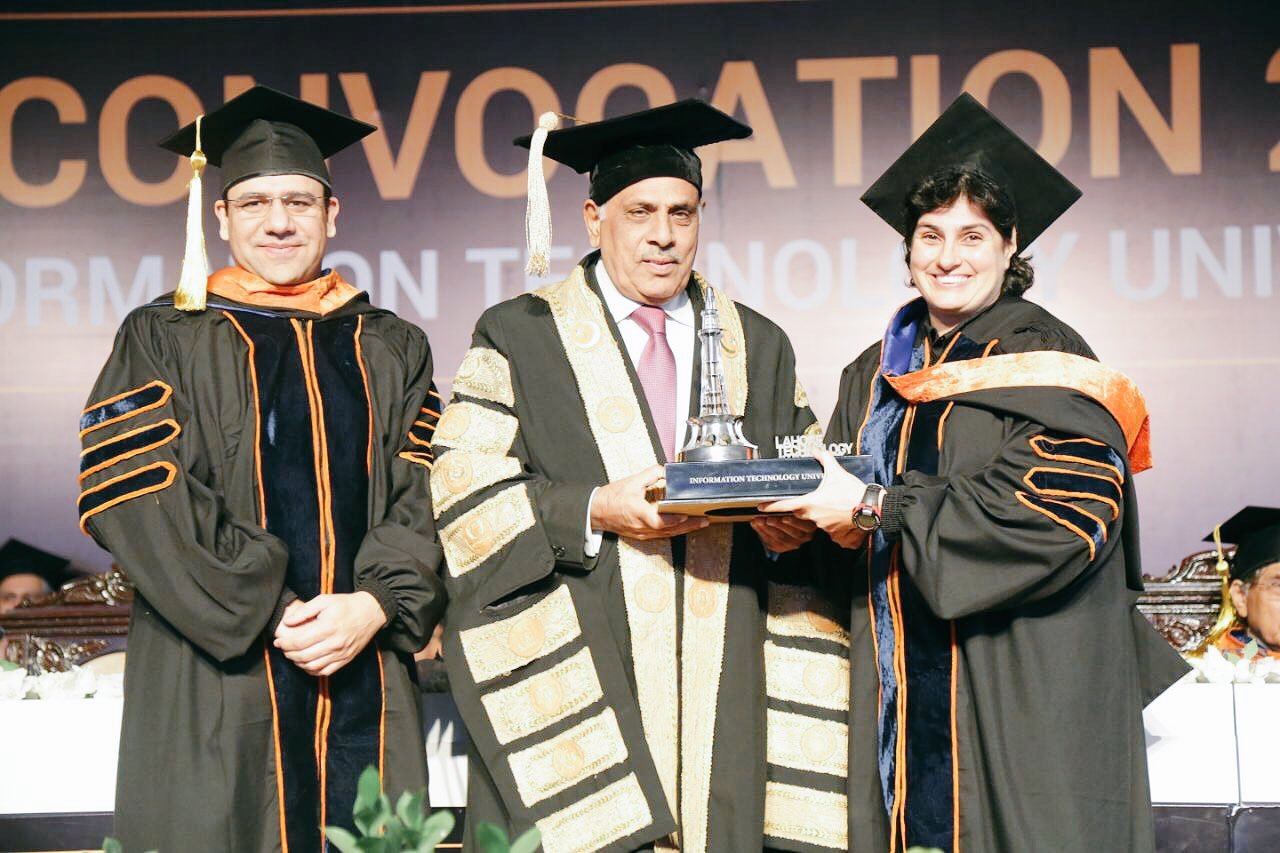
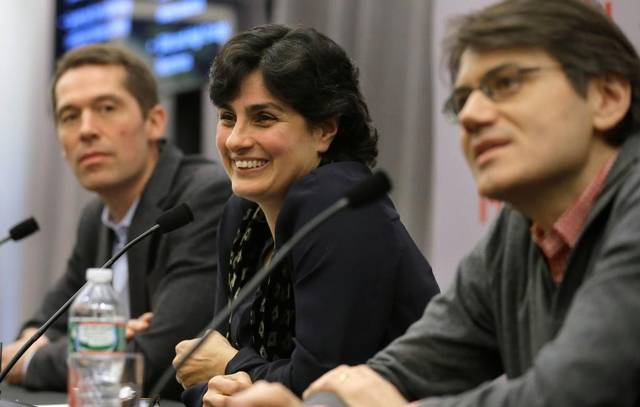
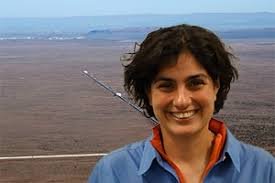
WHAT I DO
i am aN ASTROPHYSICIST
I study things like gravitational waves, which are disturbances that are created when black holes collide.
I WORK WITH LASERS AND MIRRORS.
I build and uses extremely sensitive lasers and mirrors to detect objects and waves in space.
I played a role in the very first observation of gravitational waves.
This observation now helps scientists to better measure dark objects like black holes.
i also study quantum mechanics.
Quantum mechanics is a type of physics, that helps build better tools for studying the universe.
MY WHY
I found there are many questions I need to answer before I can build all the tools I want to.
I WANT TO KNOW:
How can we better study objects in the universe that we can’t see because they don’t give off light?
What can they tell us about how the universe works?
MY ADVICE
a little about me
I’m openly queer and believe in breaking stereotypes about gender roles.
I’m super competitive and play a lot of sports. I grew up in Pakistan. I believe that creativity is a core part of science. I’m a mom and love building things with my son. I was on Star Talk with Neil DeGrasse Tyson. I failed my PhD exams many times before I passed. Once I start a puzzle, I can’t stop until I solve it. I’m terrible at memorizing anything.
MY PATH TO SCIENCE
Drawn to the Sciences
I was raised in Karachi, Pakistan. I was very energetic, active and “mouthy” as a child, according to the adults around me. I played a lot of sports. At age 10 or 11, I got to interact with the very first computers. I always liked math and science because it felt like there was a right answer. I later learned that in science there is often not one right answer.
Making Room for the Arts
I went to a school where you get tracked into either math and science or arts and humanities or economics and commerce. I had a knock for and interest in the maths and sciences, but didn’t want to be tracked. I knew I was going to stay in the sciences, but I loved the creative process that I saw in the arts and believed that it could make me a better scientist.
Pushing through the Challenges
I went to graduate school at MIT. Early on in graduate school was very hard. I would sometimes wonder if I was going to make it academically. I failed my PhD candidacy exams many times before I passed. I kept pushing through and it did get better.
Searching for the Unseeable
Once I gained the skills I needed, I quickly rose through the ranks. I continued my training at California Institute of Technology. Then, I got a faculty job at MIT and became an award-winning scientist driven to study the parts of the universe that are the hardest for us to see, like black holes. I was part of the research team that first detected gravitational waves, an incredible discovery.
Going Deeper
I found that there were other questions that I needed to answer before I could build the tools I wanted to build. So, I started looking into quantum mechanics and expanding my research to solve these problems. At the same time, I was interested in STEAM education, breaking stereotypes, and encouraging kids to study both art and science.
I study ASTROPHYSICS
Astrophysics is the study of stars, planets, galaxies, and forces throughout the universe.
INTRODUCING
Black Holes
What are black holes? Why do they matter?
There’s no escaping a black hole. That’s because the gravity in black holes is so strong it pulls everything in, including nanoparticles and light. Black holes are formed in space when objects of incredibly compact and large mass have such strong gravitational fields that nothing passing by can escape being pulled in. Since this includes light, these areas of space are dark as no light is reflected back out of them.
Astronomers have identified several locations where black holes might be present, including at the area known as Sagittarius A* in the middle of the Milky Way galaxy. Scientists believe that supermassive black holes likely exist at the center of most galaxies. Their presence can be inferred based on how surrounding stars and other material acts in the vicinity of the black hole. When stars are pulled into a black hole, sometimes they “shred” and emit a very bright light before disappearing. Other stars, further out, can be used to trace the location and mass of the black hole if they are believed to be orbiting one. The idea of black holes dates back to an English clergyman’s letter in 1784, but was greatly clarified by Albert Einstein’s theory of relativity in 1915.
Career Resources
Every scientist’s path is unique, and the right resources can make all of the difference. Below are a selection of resources that may be helpful for those who are interested in areas of science that are related to Nergis’ work.

“Being a scientist is about not being afraid to ask questions.”
— Nidhi santen
KEEP EXPLORING
Here are some resources we recommend for diving deeper into themes from this story.
Earth & Planetary Sciences
FIELD GUIDE
coming soonView more related scientists:
Looking for teacher resources?
PHOTOGRAPHER: Erica Derrickson • Boston, MA© 2024 THE PLENARY, CO. ALL RIGHTS RESERVED. TERMS. PRIVACY.This is a brand new site! See an issue? Let us know.

















